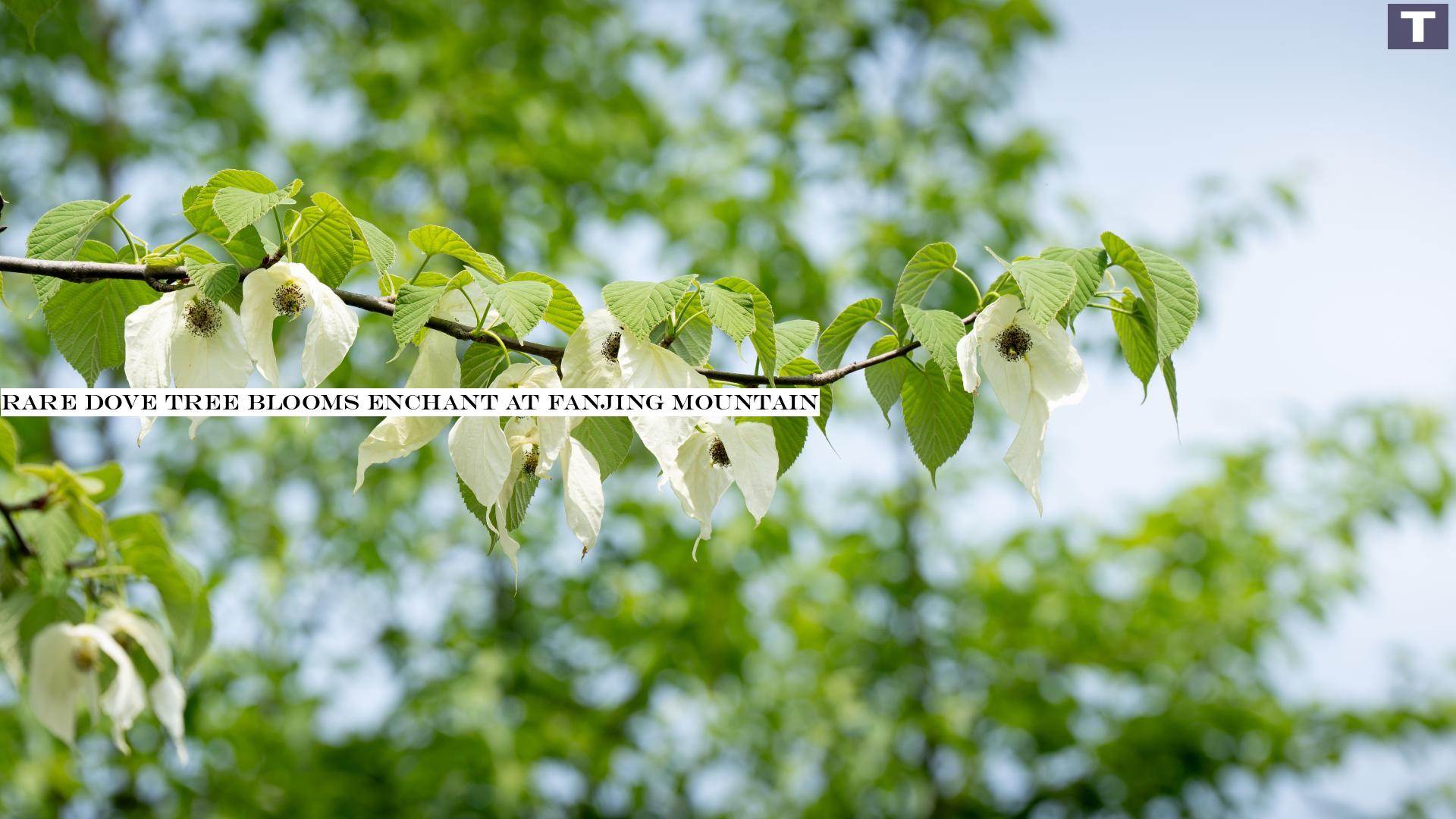
A view of dove tree blooms at the Fanjing Mountain National Nature Reserve in southwest China's Guizhou Province is seen in April 2025.
/Photo provided to CGTNA view of dove tree blooms at the Fanjing Mountain National Nature Reserve in southwest China's Guizhou Province is seen in April 2025.
/Photo provided to CGTNA view of dove tree blooms at the Fanjing Mountain National Nature Reserve in southwest China's Guizhou Province is seen in April 2025.
/Photo provided to CGTNIn late spring, the mist-cloaked valleys of southwest China's Guizhou Province come alive as Davidia involucrata the iconic "dove tree" bursts into full bloom across the Fanjing Mountain National Nature Reserve.
Known for its snow-white bracts that flutter like thousands of poised doves in flight, the rare floral display transforms the UNESCO World Natural Heritage Site into a living tapestry of ecological wonder.A national first-class protected species, Davidia involucrata is celebrated as a "living fossil of the plant kingdom" and a "green giant panda" due to its ancient lineage and scarcity.
Thriving in humid, high-altitude environments, the tree has found a sanctuary in Fanjing Mountain's unique microclimate, where its delicate blooms now paint the rugged terrain in swathes of ivory.A view of dove tree blooms at the Fanjing Mountain National Nature Reserve in southwest China's Guizhou Province is seen in April 2025.
/Photo provided to CGTNA view of dove tree blooms at the Fanjing Mountain National Nature Reserve in southwest China's Guizhou Province is seen in April 2025.
/Photo provided to CGTNA view of dove tree blooms at the Fanjing Mountain National Nature Reserve in southwest China's Guizhou Province is seen in April 2025.
/Photo provided to CGTNConservation efforts have yielded tangible results: through enhanced ecological protection and targeted artificial cultivation, the dove tree's footprint has expanded significantly.
Researchers have identified 11 distinct habitats across the reserve, with the largest cluster in the Xiaoheiwan River valley spanning over 200 mu (around 13 hectares) a testament to the region's success in nurturing this endangered species.Beyond its biological significance, Fanjing Mountain exemplifies the harmonious balance between conservation and sustainable tourism.
Each spring, the dove tree's ethereal blossoms contrast vividly with the reserve's lush green peaks, offering visitors a front-row seat to nature's resilience.
As both a biodiversity hotspot and a thriving tourist destination, the mountain stands as a global model of coexistence where human stewardship and wild beauty flourish in tandem.

 11
11





















